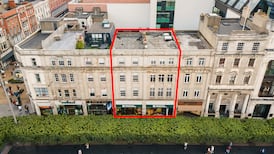The Central Bank’s new mortgage lending restrictions will “do nothing to soften house price growth”, a new report has stated.
There will be more demand for rental properties as a result of the rules, the report claims, boosting rental growth and continuing to attract new buy-to-let investors into the market.
In its latest report on the residential property market for the first quarter of 2015, Savills says that rising rents – which advanced by 9 per cent in the fourth quarter of 2014, according to property portal Daft.ie – will have a “game changing” impact on investor demand for residential property.
“By diverting demand into the rented sector, the new rules will lead to stronger rental growth. In time this will attract investors who will compete with everybody else to buy properties.
Therefore the new measures will do nothing to soften house price growth by curtailing demand.
They will simply increase the ratio of investors to first-time buyers,” says John McCartney, economist and director of research at Savills. He adds that this “captive market” of renters “guarantees a stable platform of demand which will undoubtedly encourage landlords to invest”.
Neutral impact
McCartney expects the Central Bank's intervention, which came into effect on February 9th, to have a "neutral" impact on house price growth, and is still forecasting price growth of about 8-12 per cent this year. This would push the cost of a €220,000 property up to as much as €246,000 by next year, pushing it into a higher deposit bracket under the Central Bank's new rules.
The new lending regime may also conspire to put pressure on prices by restricting supply, with Peter Stafford, director of Property Industry Ireland, noting the uncertainty surrounding it is impacting developers' plans.
“We know how it will work in abstract, but we’re not sure in reality,” he says.
Investors come to the fore
McCartney had expected the level of buy-to-let investors to decrease following the abolition of the capital gains tax (CGT) exemption at the end of December 2014. Last year such investors were the largest group of buyers.
However, a combination of rising rents, as well as the European Central Bank’s quantitative easing programme, which will likely push deposit yields even lower, thus incentivising investors to seek out riskier, but higher yielding assets, such as residential property, is now creating an environment for new buy-to-let investors to enter the market.
While since the crash, Ireland has seen the arrival of institutional investors such as real estate investment trusts (Reits) and international real estate funds buying into multi-family residential blocks, now it’s smaller investors who are making their presence felt.
“Small retail investors are coming in and buying up units,” says McCartney, adding that “93 per cent of them are entirely cash-funded”.
“They’re targeting specific types of apartments, where the yields tends to be stronger and upkeep is easier and cheaper,” he says, adding that they’re typically not buying an “apartment in Clonee or duplex in Tallaght”, but are sticking to prime rental areas, eyeing up properties in the €250,000- €300,000 price bracket.
Meanwhile it’s understood that the National Asset Management Agency (NAMA) has about 10,000 apartments left on its books. Most of these are currently rented and producing an income stream, but will in time be sold off.
Changing of the investor guard
But if investors might mop up on any slippage in demand caused by the Central Bank’s new rules, thus supporting prices, it begs the question as to where they will find properties, given the much-publicised shortages.
One source is likely to be other investors. As McCartney notes, investors were also big sellers in 2014 and he points to a displacement of the old style, opportunistic or “accidental” investor of the boom years, with a new, more professional equivalent. The recovery in prices has allowed many boom-time investors to exit the market, to be replaced by a “different breed”, as McCartney sees it. “We’re seeing a more professional investor,” he says, adding that “the vast majority are Irish”.
As these investors compete with first-time buyers and those trading up for properties, prices will continue to grow, albeit at a moderated pace.
Supply shortage
Stafford doesn’t expect a significant move in new development construction in 2015, but he’s hopeful that the uplift will start “if we can get planning working”.
New development would ease supply issues but Stafford argues that a constraint is a lack of certainty within the planning system. With new planning bills making their way through the Oireachtas, he's hopeful that this will help.
“People are waiting to see what the new legislative regime will be before commencing developments,” he says, noting that the expectation is that development levies will fall, thereby making projects more financially viable.











